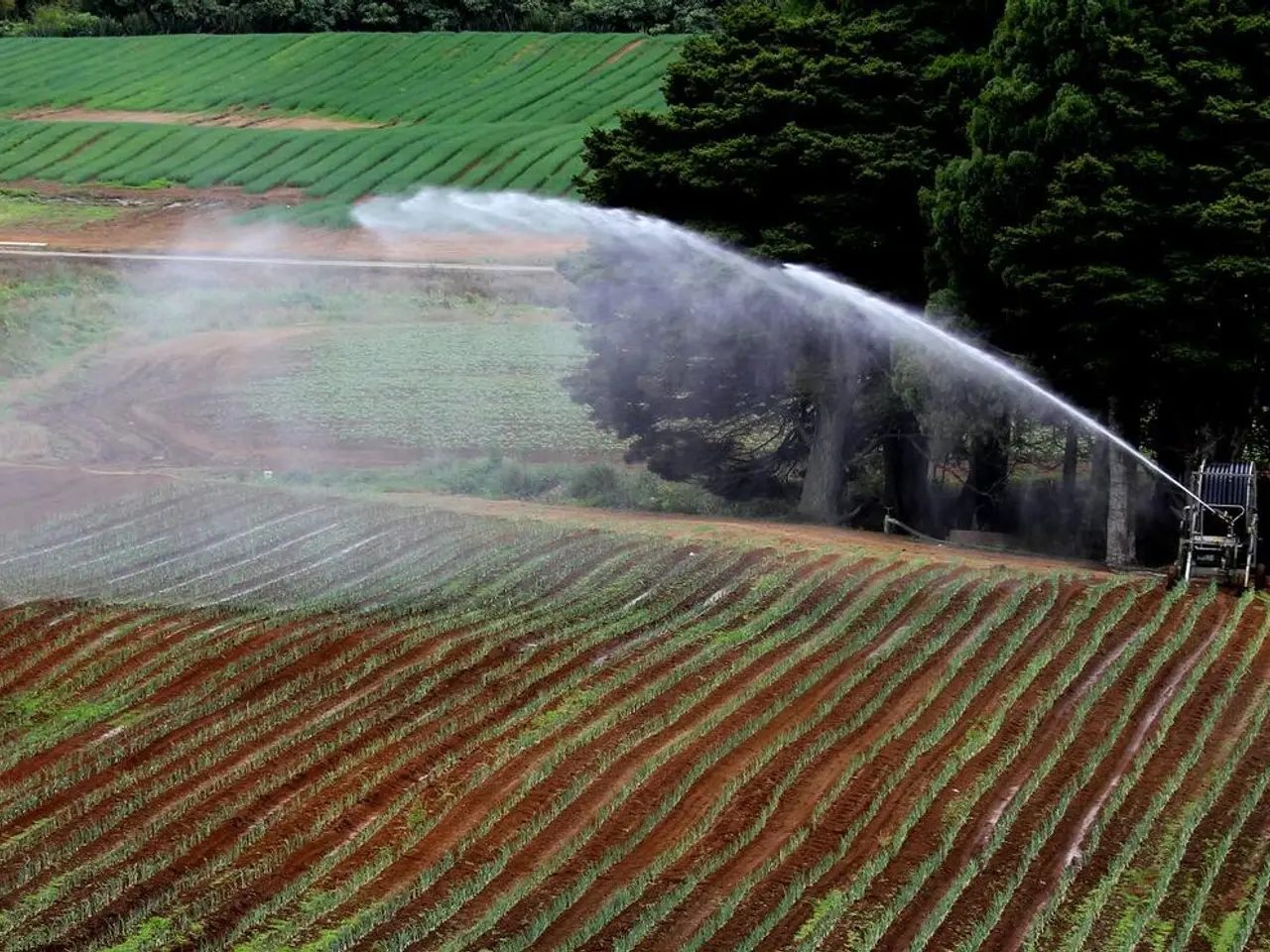Haryana's Chief Minister Distributes a Generous Bonus Amounting to $525 Crores Among Over 5 Lakh Farmers
Haryana, one of India's leading agricultural states, has announced a financial package of ₹525 crore to benefit over five lakh farmers in the state. The Chief Minister's announcement marks a significant step towards supporting farmers, enhancing agricultural productivity, and ensuring the sustainability of farming livelihoods in Haryana.
The bonus is expected to provide immediate relief to farmers, many of whom operate small to medium-sized farmland and have faced challenges due to unpredictable weather patterns, fluctuating market prices, and the ongoing impacts of the COVID-19 pandemic.
Long-term Impacts and Potential Consequences
The bonus is likely to have several long-term impacts on Haryana's agricultural sector and farmland market. Here are some key areas to consider:
Increased Farmer Income and Production
The bonus can directly boost farmers' incomes, improving their financial stability and potentially encouraging greater investment in agricultural inputs and technologies. This may raise overall farm productivity in Haryana, supporting crop diversification and sustainable farming practices.
Enhanced Agricultural Sustainability
Alongside direct financial support, related initiatives focus on improving irrigation facilities, post-harvest storage, and credit availability. These can reduce vulnerability to climatic shocks and market fluctuations, potentially stabilizing agricultural output over the long term.
Potential Inflation in Farmland Prices
With improved profitability and income, demand for farmland might increase, potentially raising land prices. This could benefit existing landowners but make entry more difficult for small or new farmers.
Risk of Market Distortions
If bonuses and support payments are not carefully calibrated, there is a risk that incentives could encourage overproduction of certain crops or maintain reliance on guaranteed incomes rather than competitive market practices.
Impacts on Small vs. Large Farmers
Financial incentives could help sustain smallholders or equally favor larger landowners who benefit more from economies of scale. In unregulated markets, this might accelerate land consolidation or pressure small farmers to sell lands, risking socio-economic shifts in rural Haryana.
Encouragement of Agricultural Modernization
The bonus, combined with accompanying governmental support mechanisms, might accelerate adoption of modern agriculture technologies, irrigation, water conservation, and sustainable methods.
In summary, Haryana's ₹525 crore farmer bonus has the potential to significantly increase agricultural productivity and farmer income, support sustainable agricultural practices, and stimulate farmland demand and prices. However, careful policy design will be essential to avoid market distortions, protect small farmers, and ensure that the agricultural sector benefits broadly and sustainably in the long term.
The bonus reflects a deep understanding of the critical role that farmland and farmers play in Haryana's economy and contributes to the overall progress of the state. It may also encourage more young people to pursue careers in agriculture, helping to ensure a sustainable workforce for the future. The bonus aims to alleviate the financial strain on farmers caused by rising input costs and will be distributed based on factors such as the size of the farmland, the types of crops grown, and the overall yield.
The financial package, amounting to ₹525 crore, presents a significant investment opportunity for enhancing Haryana's agricultural sector, considering its potential to boost farmer incomes, encourage greater investment in agricultural inputs and technologies, and raise overall farm productivity. Consequently, this could lead to increased profitability and stimulate demand for farmland in the longer term.
Furthermore, the enhancement of agricultural sustainability through improved irrigation facilities, post-harvest storage, and credit availability, as part of related initiatives, could significantly reduce vulnerability to climatic shocks and market fluctuations for farmers in Haryana, ensuring long-term stability.
These developments in the agricultural sector, driven by the financial package and supportive governmental measures, may also foster modernization and the adoption of sustainable methods, attracting more young people to pursue farming careers and securing a sustainable workforce for the future.





